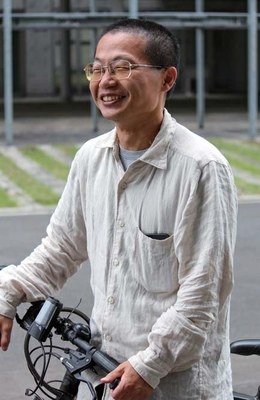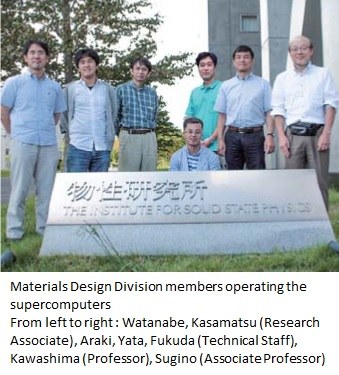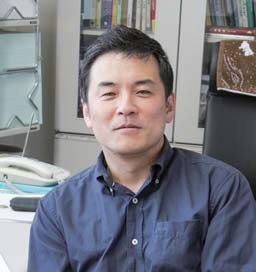Divisions of CMSI Condensed Matter Physics Division
Institute for Solid State Physics The University of Tokyo
Hiroshi Noguchi
Associate Professor, Materials Design and Characterization Laboratory/
Center of Computational Materials Science, Institute for Solid State Physics,The University of Tokyo
Providing existing software as well to meet needs

Research for creation of an advanced parallel computing environment
Shared use of the ISSP supercomputers is open to any applicant, provided that the objective is research in the field of condensed matter physics by researchers in research institution in Japan. In addition to two regular application periods each year (June and December), “anytime” applications are also accepted ̶ Class D for urgent large-scale simulation, and Class A for trial use. CPU time and other computing resources are allocated based on an evaluation by review committee members, in particular regarding whether or not the large-scale calculations can only be executed on the ISSP supercomputer systems and so on. Currently 88 researchers volunteer their time to serve on the review process. In addition to general shared use, 20% of the computing resources are provided to CMSI.
The supercomputers are operated by the Supercomputer Center of the Materials Design Division in the Materials Design and Characterization Laboratory in ISSP. The core personnel are Professor Naoki Kawashima, Associate Professor Osamu Sugino and myself; two research associates, Hiroshi Watanabe and Shusuke Kasamatsu; and three technical staff, Hiroyuki Yata, Takaki Fukuda and Shigeyuki Araki. We pursue work activities with the cooperation of the other professors within the In titute and at other institutions. We couldn't do it without the hard work of the research associates and technical associates in particular, so we're deeply indebted to them.
The Materials Design Division also works to develop, release and spread software, and we are making plans to create an environment that will make it easier for shared computer users to perform advanced parallel computing. To this end, starting in April 2015 we will have two new project researchers to provide development support.
As a CMSI core division
CCMS was established in April 2011 to support CMSI activities. In addition to Center Director Shinji Tsuneyuki and Professor Naoki Kawashima, CCMS has three professors, three associate professors, five research associates, 12 project researchers, two project academic support specialists and five clerical support staff members. This makes it seem like a very large institution, but many of the members serve in concurrent posts or work in Kobe or other distant locations, so not many of the staff members are resident in Kashiwa.
In contrast to the Materials Design Division, which primarily makes its supercomputer available for shared use, CCMS focuses primarily on software dissemination and development support. As an activity on the part of CMSI as a whole, CCMS built the MateriApps portal site in 2013 to introduce software. CCMS also plans w rkshops and symposiums, and in October it holds the ALPS tutorial. Through these activities, our goal is to build an environment that makes it easy for not only theoretical but also experimental researchers to perform numerical calculations.
 |
Message from the Director of the Condesed Matter Physics Division
Naoki KawashimaDuring my graduate school days in the late 1980s, computers became readily available for use even by students, and one after another algorithms were created ingeniously exploiting characteristics of physical systems in question . It was a time at which, in most cases, we only needed to consider how fast we could calculate using a single processor, and we simply accepted that algorithms themselves had universal value. The times have changed, and now we have entered the era of large-scale parallel computing. But the question of what is the fastest materials calculation algorithm for the distributed memory parallel computing model is still a universal one that is not affected by the specifics of the hardware. It is my hope that we can build an environment that allows computational materials science researchers the freedom to boldly seek answers to this universal question.
|
|---|

